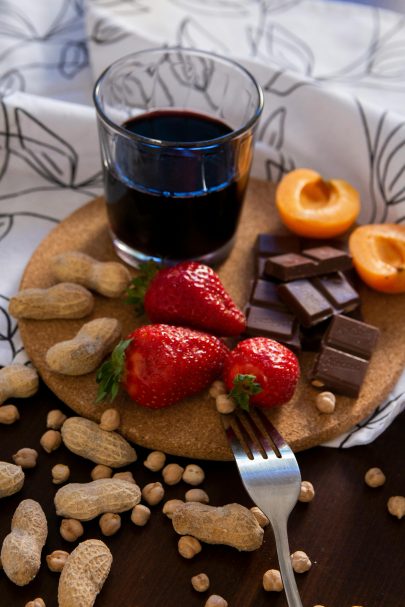Let’s face it, sometimes that post-dinner chocolate craving needs a more sophisticated answer than sneaking a spoonful of Nutella straight from the jar (guilty as charged!). The answer? Dessert wines.
As if we needed another excuse to drink more wine! But, dessert wines are more than just sweet reds that go well with cakes and chocolate. You can actually sip them by themselves. Or, you can pick different kinds of dessert wines to pair with a few after-dinner snacks.

Unsplash
What exactly is dessert wine?
Dessert wines, or fortified wines, have undergone a process where grape spirit, or brandy, has been added to it during or after the fermentation process. The taste of the dessert wine all depends on when the spirit was added. If the spirit is added during fermentation, you’ll get that sweet wine you’re after. However, if it’s added after fermentation, it results in a dry wine.
ALSO SEE: Leftover wine? Don’t pop the cork back! Do this instead
If you have any inclining to dessert wines, Old Brown Sherry has probably been lingering in the back of your mind. But, there are actually several options you can go for that go beyond that old bottle of OBS sitting in your liquor cupboard.

Pexels
The different kinds of dessert wines
Moscato d’Asti is one type of Italian white sweet wine that falls under the dessert wine category, and any form of Sherry. You can get dry and sweet Sherries. Monis Pale Dry Sherry is a great dry sherry that has a crisp, dry lime flavour with a hint of cashew nuts. On the other hand, Sandeman Medium Sweet Sherry is a full-bodied, rich sweet wine.

Pexels
And, technically, vermouth is technically a fortified wine.
Oh, and we can’t ignore the fan favourite Port. Port is a Portuguese wine from Douro Valley. Ports are sweet, and often far more full-bodied and rich when compared to other sherries and sweet wines.
ALSO SEE:
Featured Image: Unsplash

